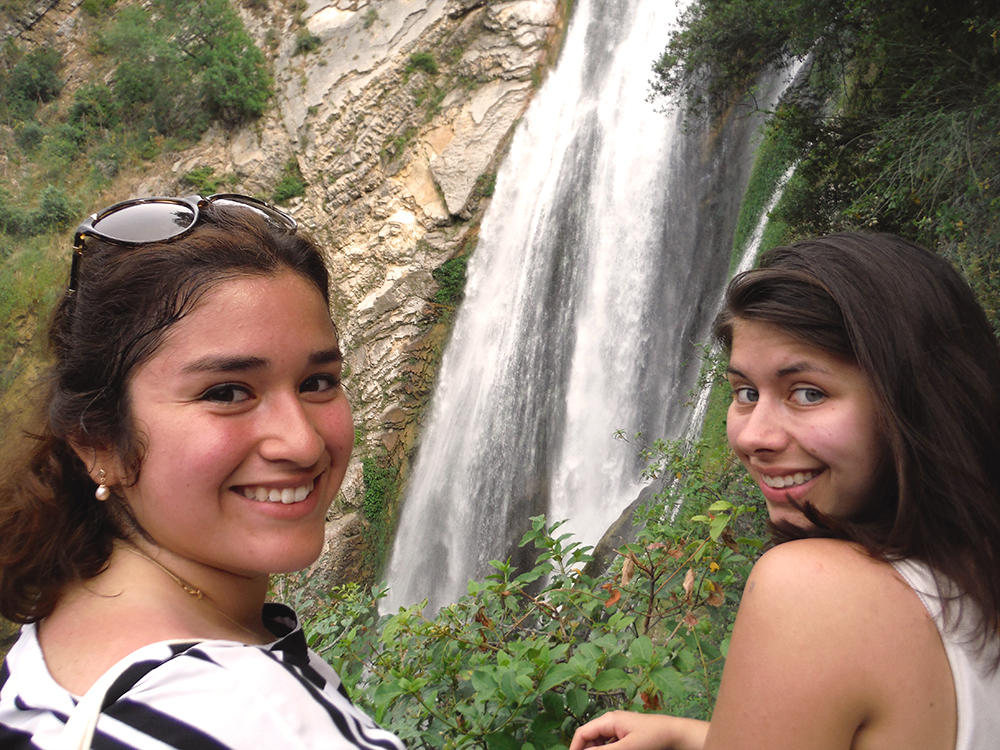June 26th – July 21st
This summer, Beauty and the Sacred will be offered in two different versions, a six-week long course, and a shorter, four-week version. Below you can find details for the four-week version. For details concerning the longer version of the course, please check the menu at the top of the page.
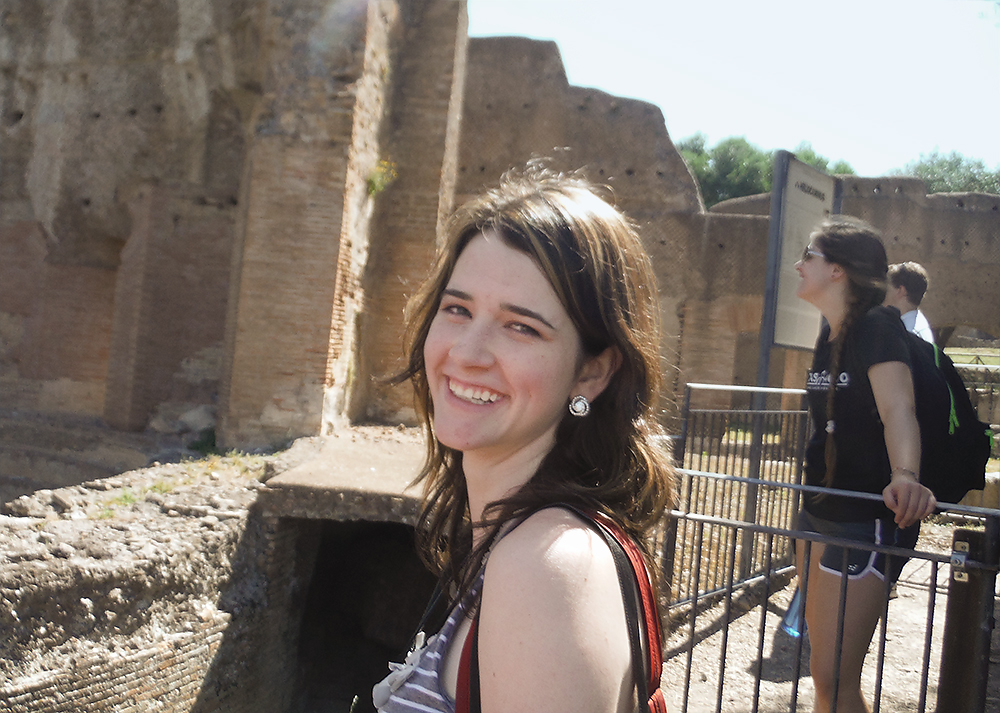
Course description
Beauty has always been intertwined with the sacred, from the perfect proportions of Greek temples and statues, to medieval love poetry, to renaissance and baroque religious art and architecture, and so on. But their relationship has also often been an uneasy one because of beauty’s tendency towards independence from serious ethical concerns, or because of a perceived threat of idolatry. The beautiful has a similarly complex relation to the history of philosophy. While it seems to be at the very heart of ancient philosophy and medieval thought, it comes to be of less consequence for modern philosophers, even for many philosophers with a serious interest in the history of art. Some moderns have even claimed that beauty was a thing of the past, and that art is dead. So, what significance should the beautiful have in our understanding of philosophy? And more generally, what relation does beauty have to the sacred? What is the difference between idol and icon? We will address such questions in our classes and excursions in Rome.
To pursue these questions we will read Dante’s Divine Comedy and Hegel’s Aesthetics. Hegel’s book was described by Heidegger as “the most comprehensive reflection on the essence of art that the West possesses”. It is a unique guide to the art in Rome from Classical to modern. Rome is the natural setting for this course. Questions about art and religion, both pagan and Judeo-Christian, are everywhere in the city which was the great center of classical, medieval, renaissance, and baroque art. In addition, the art in Rome provides numerous concrete connections to details of our readings.
Once or twice a week, after the morning seminar, students will get a brief pre-visit presentation intended to make a helpful link between the issues under discussion and the site to be visited in Rome that day. Informal discussion can follow then, or later on, when on site.
There will also be one formal guest lecture on the theme of the course.
top of page
Course dates and format
The four-week course will start on Monday, June 26th, and it will end on Friday July 21st. Students are required to arrive in Rome by 8pm on Saturday, June 24th; they will be required to leave their apartments by 10am on Saturday July 22nd.
Classes are structured as seminars, discussion-based classes that meet in small groups led by a faculty member. The setting allows for a deeper inspection of the texts and issues studied, as well as a high level of student participation. Seminars meet for an hour and fifteen minutes, four days per week, in the morning.
Once or twice a week, before the morning seminar, students will get a brief pre-visit presentation intended to make a helpful link between the issues under discussion and the site to be visited in Rome that day. Informal discussion can follow then, or later on, when on site.
Once or twice, on the day when there are no classes, students will take part in a longer tour in the city, or, alternatively, a full day trip out of Rome.
Weekends are free, with the exception of the one dedicated to the optional trip to Siena.
There will also be at least one formal guest lecture on the theme of the course.
top of page
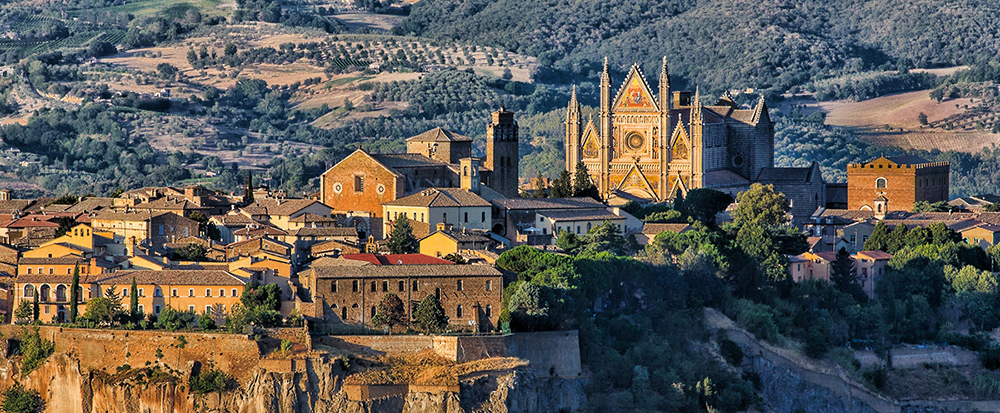
Excursions
The class will go on a number of excursions each week. At least one excursion will take us outside of Rome, to Orvieto. An optional weekend excursion will take us to Siena. Students explore sites together with the seminar leaders and sometimes with an art historian or classicist as well.
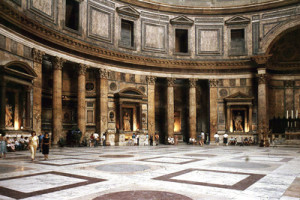
We begin our time in Rome with the Vatican and St. Peter’s Basilica. In these settings we are confronted by a number of Renaissance appropriations of Plato, in Raphael’s “School of Athens” and in Michelangelo’s neo-platonic allegories in the Sistine Chapel. The vast collections of classical, medieval, renaissance, and baroque art that will be of significance for our reflections on the theme of the course as a whole and will have particular value for our Hegel reading at the end of the course. We will also visit a series of ancient and medieval Churches (Santa Costanza, Santa Maria Maggiore, Santa Pudenziana and Santa Prassede) in which ancient art transformed itself into Christian art, raising theological controversies about iconoclasm that resulted in major historical changes in Europe and the Middle East. We will also get a sense of public and private in the Roman empire, as we visit the great symbol of Augustus’ achievement, the Ara Pacis, as well as beautifully frescoed private Roman houses, discovered on the Celio hill.
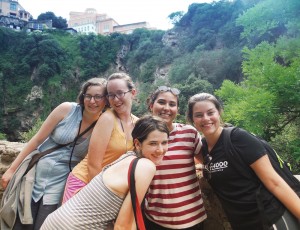
In the second week, now reading Purgatorio, with some of Dante’s most important statements about Church and Empire, we will reflect on the politics of Constantine and his conversion of Rome from pagan to Christian empire. We will visit the arch dedicated to him in his lifetime, as well as the Medieval fresco cycle on his donation of political power to the Church in Santi Quattro Coronati. We will visit the Lateran, established by Constantine, which has much art work devoted to the rise and the fall of this political doctrine. We will also visit Santa Sabina, the ancient church where Thomas Aquinas conceived and wrote his Summa Theologica, We will also visit the Churches in Trastevere painted by Dante’s contemporary, Pietro Cavallini, at the origins of Renaissance painting.
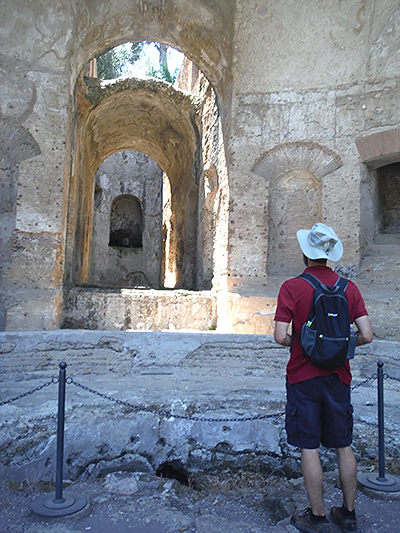
In the third week, as our readings turn to Hegel, we will begin to think about modernity. We will look at paintings by Caravaggio in Santa Maria del Popolo and San Luigi dei Francesi. We will also visit the Galleria Borghese, which has a large collection of paintings by Caravaggio. There we will look at Bernini’s redefinition of art in his revolutionary sculptures. The Borghese also has numerous other great works of Renaissance painting, including one essential to our theme, Titian’s Sacred and Profane Love. We will take a trip to Orvieto, a former Papal residence, and a center of study for Aquinas and the medieval Domenican order. The town has much major medieval and renaissance art of relevance to our course and to Dante in particular. There we will visit the friezes of the Last Judgement by Luca Maitani, and the frescoes of the same by Luca Signorelli, based on Dante’s Comedy, and an inspiration for the Sistine Chapel (which we see the following week). It will also be a chance to see a major Gothic church, a style less common in Rome.
In the fourth week, we continue the examination of imagination and modernity in relation to our Hegel readings. We will try to understand Borromini’s new ways of presenting infinity in his architecture, and in the new, very modern understanding of the sacred that his churches suggest. We will visit most of his major works (Sant’ Ivo, San Carlo alle Quattro fontane, and Sant’ Agnese in Agone). We will also visit the Palazzo Barberini, built by Borromini and Bernini, now an important museum for Renaissance and Baroque art.
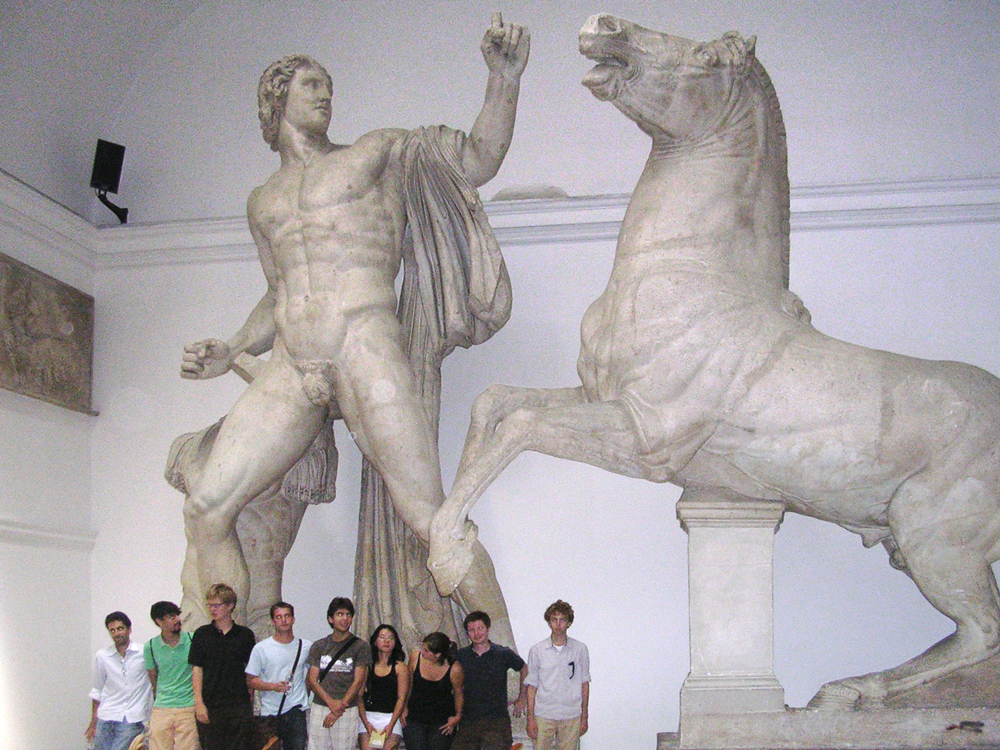
Optional trips
All students and faculty in both RILA summer class will be invited on a non-required, overnight trip to Siena.
Siena is one of the most beautiful cities in Italy, as well as one of the most important sites for sacred art. The mere quantity of important art in this small city is vast and overwhelming. The Sienese style is of particular interest for our theme of beauty and the sacred, since it offers a more mystical version of the momentous developments in Italian late medieval and renaissance art. The work of Duccio in particular is both historically important and worth thinking about for the theme of our course. In Siena we can also visit the Palazzo Pubblico, which was the beginning of a new development in the idea of secular public life in the late middle ages, the birth of the commune and the end of the feudal order. Within the historic building are Lorenzetti’s Aristotle-inspired frescoes of good and bad government. These famous frescoes alone are worth the trip for readers of Aristotle’s Politics, and are of particular interest in connection with our Dante readings.
The optional trip requires paying separately for a bus trip as well as an inexpensive hotel. Details will be made available later, but we make sure any optional trips are very, very inexpensive. In past years nearly all participants in all RILA courses went on the optional trips.
top of page
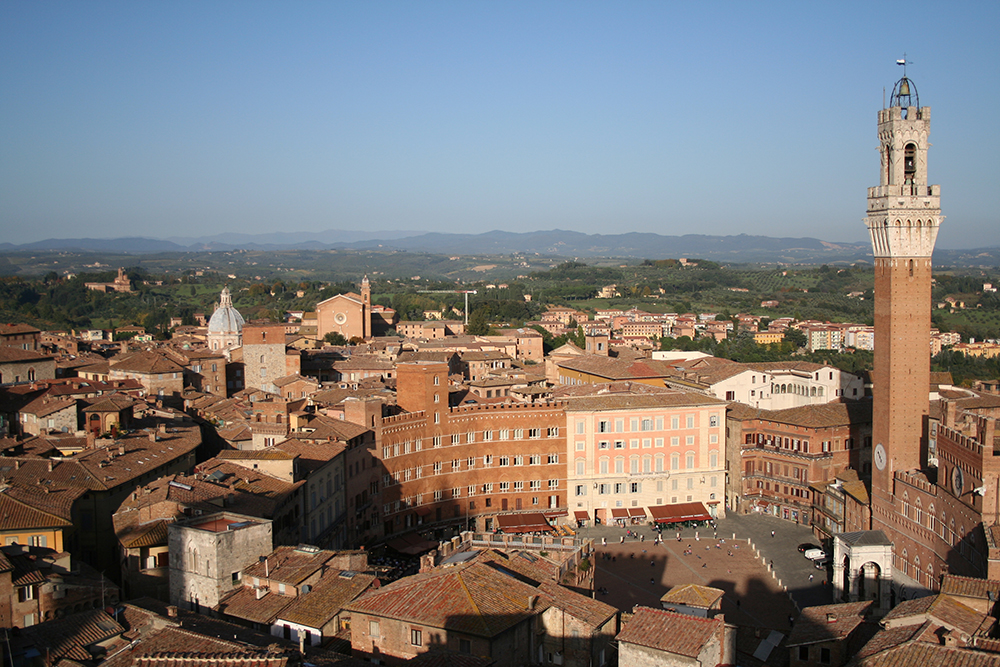
Readings
Dante, Vita Nuova, Divine Comedy.
Hegel, Aesthetics (selections).
top of page
Seminar Faculty
Philip Bartok, St. John’s College Santa Fe
Philip Bartok has taught at St. John’s College in Santa Fe since 2003. He holds a B.S. in physics from the University of Connecticut, and an M.A. and Ph.D. in philosophy from the University of Notre Dame, where he specialized in 19th and 20th century French and German philosophy and philosophy of science.
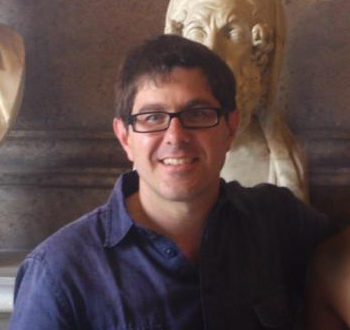
Gabriel Pihas currently teaches in the Integral Studies Department at St. Mary’s College of California. He is a former tutor at St. John’s College in Annapolis, Maryland. He got his PhD. at the University of Chicago, and before that his M.A. at Yale. In 2001-2002 he was a fellow at the American Academy in Rome in Italian literature, and in 2003-2005 an assistant professor at the European College of Liberal Arts in Berlin, Germany. In addition to his specialty in renaissance literature, he has strong interests in ancient philosophy and in twentieth century continental philosophy. In 2008 Mr. Pihas founded the Rome Institute of Liberal Arts, for which he has served as academic director ever since.
Art historians
Gianpaolo Castelli
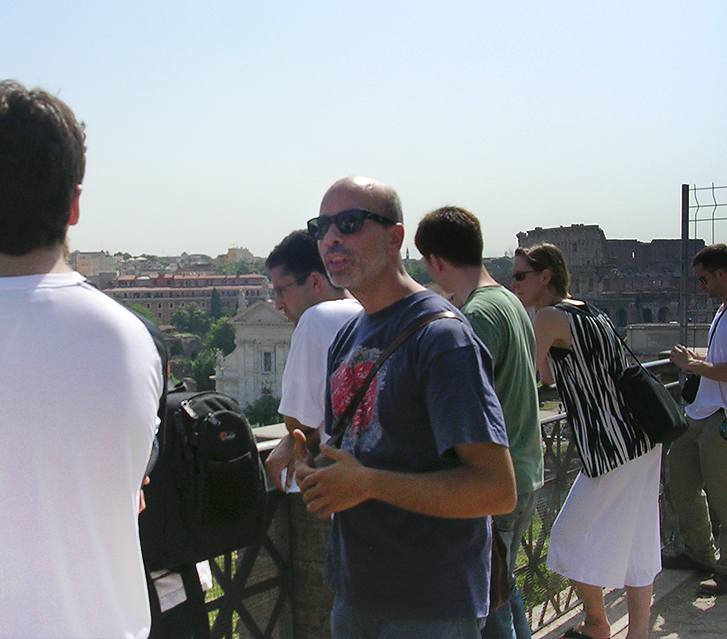
Gianpaolo Castelli currently works in the Office for Museums, Libraries, and Archives at the Lazio Regional Department of Culture, where he took up a post as art historian in September 2007. He has worked for many years in publishing as well as in educational projects for students and adults aimed at appreciating the cultural heritage of Italy. After receiving his degree in Classics in 1995, he went on to specialize in Etruscan, Greek and Roman Art history. More recently he received a masters degree in Paleography and Archival Science, and is currently researching late Medieval and early Renaissance Rome’s cultural milieu.
Teresa Calvano
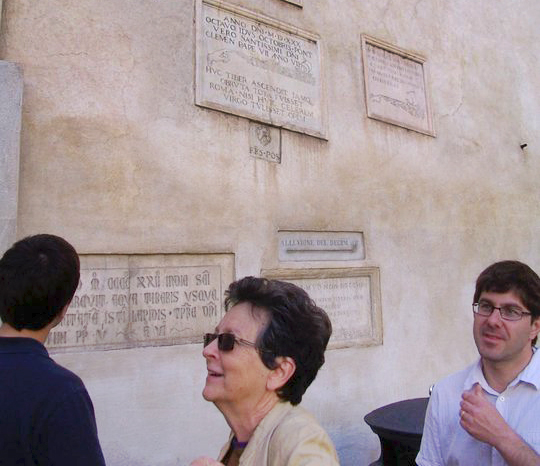
Art historian, President Emeritus of the Italian National Association of Art History Teachers (ANISA), President from 2001 to 2008. In 1977-78 she had a fellowship at the Cultural Heritage Department of Unesco, in Paris. From 1980 to 2003, she has taught art history in Italian “licei”. From 2006 to 2008 she has taught contemporary art at the University of Rome “Roma Tre”, teaching special courses for future art history teachers. Professor Calvano has published on numerous subjects of modern and contemporary art history, including women artists. She is also an expert on art teaching pedagogy and has published several articles on that subject.
Italian language course
